Cesium for Unreal Now Available
We’re ecstatic to announce the open source release of the Cesium for Unreal plugin. This marks the dawn of a new era as the line between the physical and the digital worlds blur with this bridge between the 3D geospatial and game engine ecosystems.
For the last decade, Cesium has brought graphics and game engine techniques to 3D geospatial via the CesiumJS WebGL engine and surrounding platform. Today we are adding the reverse; we are bringing 3D geospatial to Unreal Engine.
Cesium for Unreal is:
- A highly-accurate global-scale WGS84 globe gleaned from our deep experience working alongside rocket scientists in aerospace analysis and visualization.
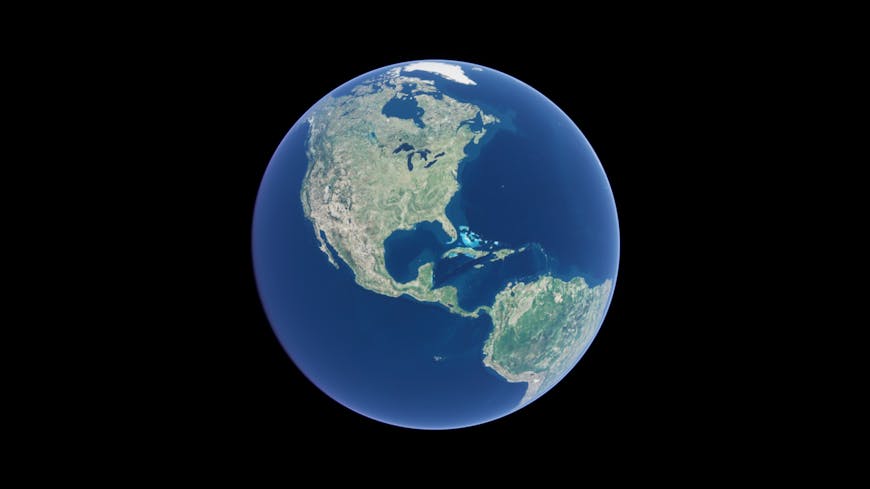
- A runtime 3D Tiles engine, complete with level-of-detail selection and caching, to stream massive 3D geospatial datasets, such as terrain, imagery, 3D cities, and photogrammetry, from the cloud, a private network, or the local machine.
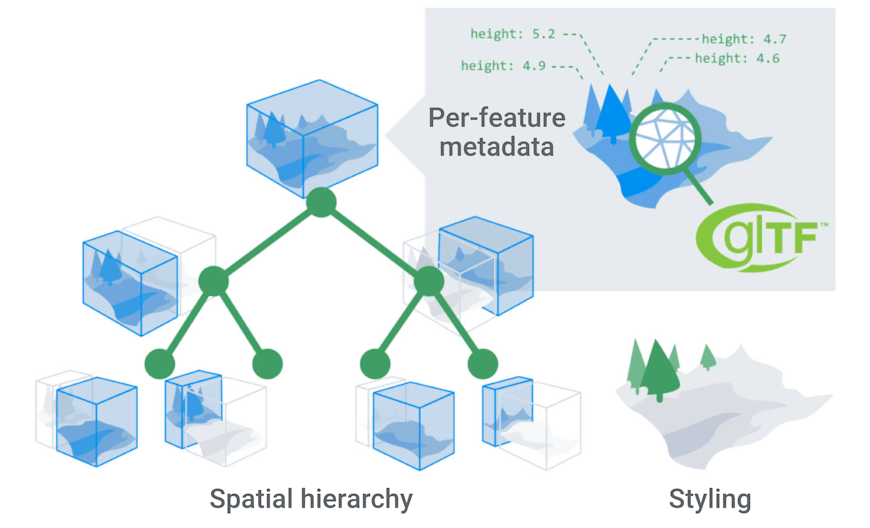
- Integrated with Unreal Engine Editor, Actors and Components, Blueprints, Landscaping and Foliage, Sublevels, and Sequencer to enable, for example: character and vehicle physics and collisions with photogrammetry models; atmosphere, shadows, and volumetric clouds to add a wow factor to terrain and imagery; Unreal’s water engine to add realism to real-world coastal scans; and using Unreal’s landscaping tool to add foliage to real-world terrain.
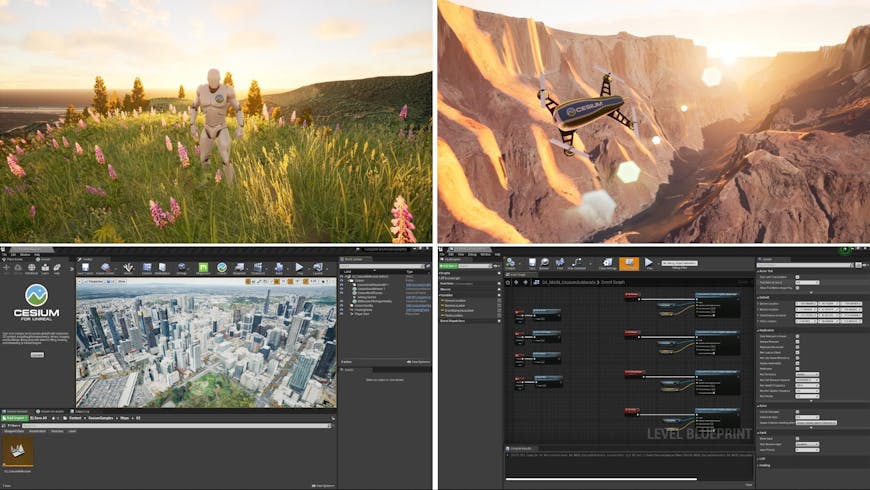
- Integrated with Cesium ion cloud services for instant access to curated 3D geospatial content such as global terrain, imagery, and buildings, as well as 3D tiling pipelines to optimize real-world 3D content for streaming.
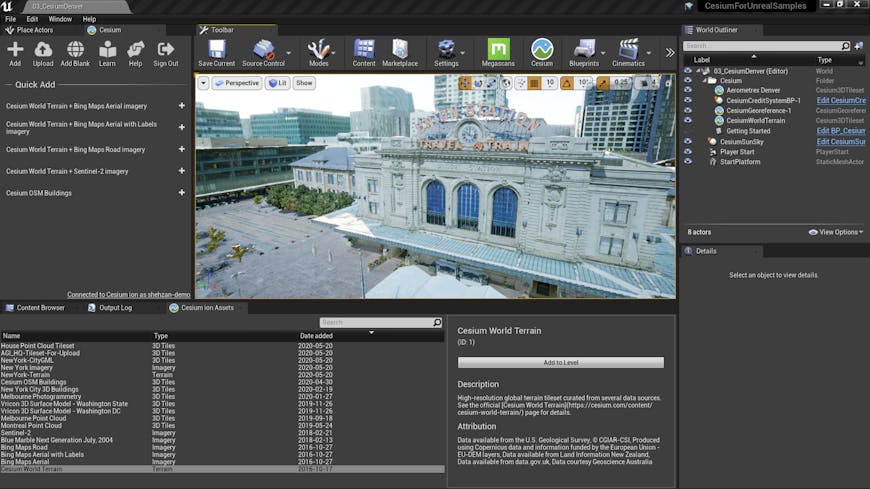
Business Model
Community success is at the core of Cesium’s DNA. We believe that significant and sustained contributions to the ecosystem create lasting value and advance our craft faster than a pure-play proprietary model. As such, Cesium for Unreal is free and open source under the liberal Apache 2.0 license. Cesium ion is an optional commercial service that provides real-world 3D content and 3D tiling pipelines, which supports funding our open source development.
This business model is called an open-core business model and is sometimes used where commodity software is made open source to support potential interest in value-add commercial software. Cesium for Unreal is anything but commodity, so we are a bit extreme in the openness of our model. We believe this openness will facilitate rapid collaborative innovation and create collective community success, while giving our business the opportunity to grow based on merit and delivering valuable services. This is the way business should be done.
The Cesium Platform
Cesium for Unreal is a complement to CesiumJS, our open source purpose-built 3D engine for the web. We are advancing both engines in parallel and cross-leveraging our efforts; for example, by advancing 3D Tiles and glTF specifications, by utilizing Cesium ion services, and by simply applying lessons learned on topics such as high-precision rendering and 3D Tiles streaming optimizations.
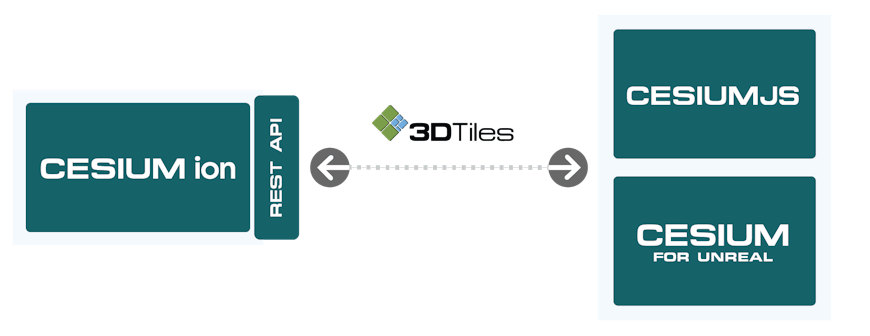
Cesium for Unreal is built on a new open source C++ library, Cesium Native, that provides engine-agnostic 3D Tiles streaming, lightweight glTF loading, and high-precision 3D geospatial math. We will explore how to make this library broadly useful to the community for runtime and pipeline integration, as well as WebAssembly approaches to utilize its capabilities with CesiumJS.
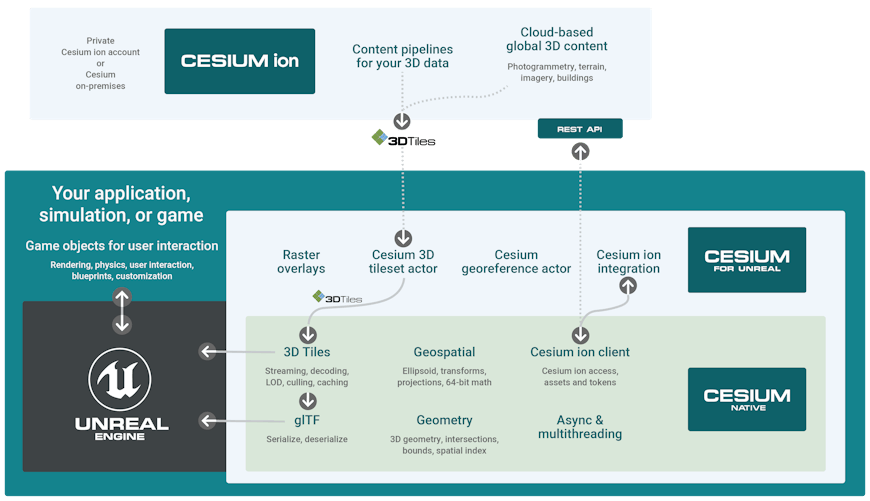
You and The Future
I freely admit to occasionally looking back at our company launch blog post of 2019, the Introducing 3D Tiles blog of 2015, or the first CesiumJS community forum post of 2012 to reflect on where we thought we were going compared to where you, the community, brought us with your creativity and contributions.
I look forward to coming back to this blog to reflect on the leaps you take at this inflection point.
We live in an exciting time of ubiquitous sensors capturing the real world; drones and autonomous vehicles carrying sensors; photogrammetry and AI algorithms creating semantic 3D models; data explosion in resolution and collection frequency; plentiful cloud compute and storage; AR and VR devices coming of age; 5G bandwidth on the rise; GPUs that rival past supercomputers; and cell phones that rival yesteryear’s laptops. My prediction is that the dividing line between the physical and digital worlds will continue to blur, as will the line between 3D geospatial and game assets and ecosystems. This ecosystem of ecosystems will be enabled by open standards and platforms of platforms. 3D Tiles may very well become the spatial temporal index for all of it. I won’t be a graphics programmer in geospatial; I will just be a programmer.
One prediction is certain: you will create the future; our role is just to facilitate it.
Get started with Cesium for Unreal and share your ideas and questions on the community forum.